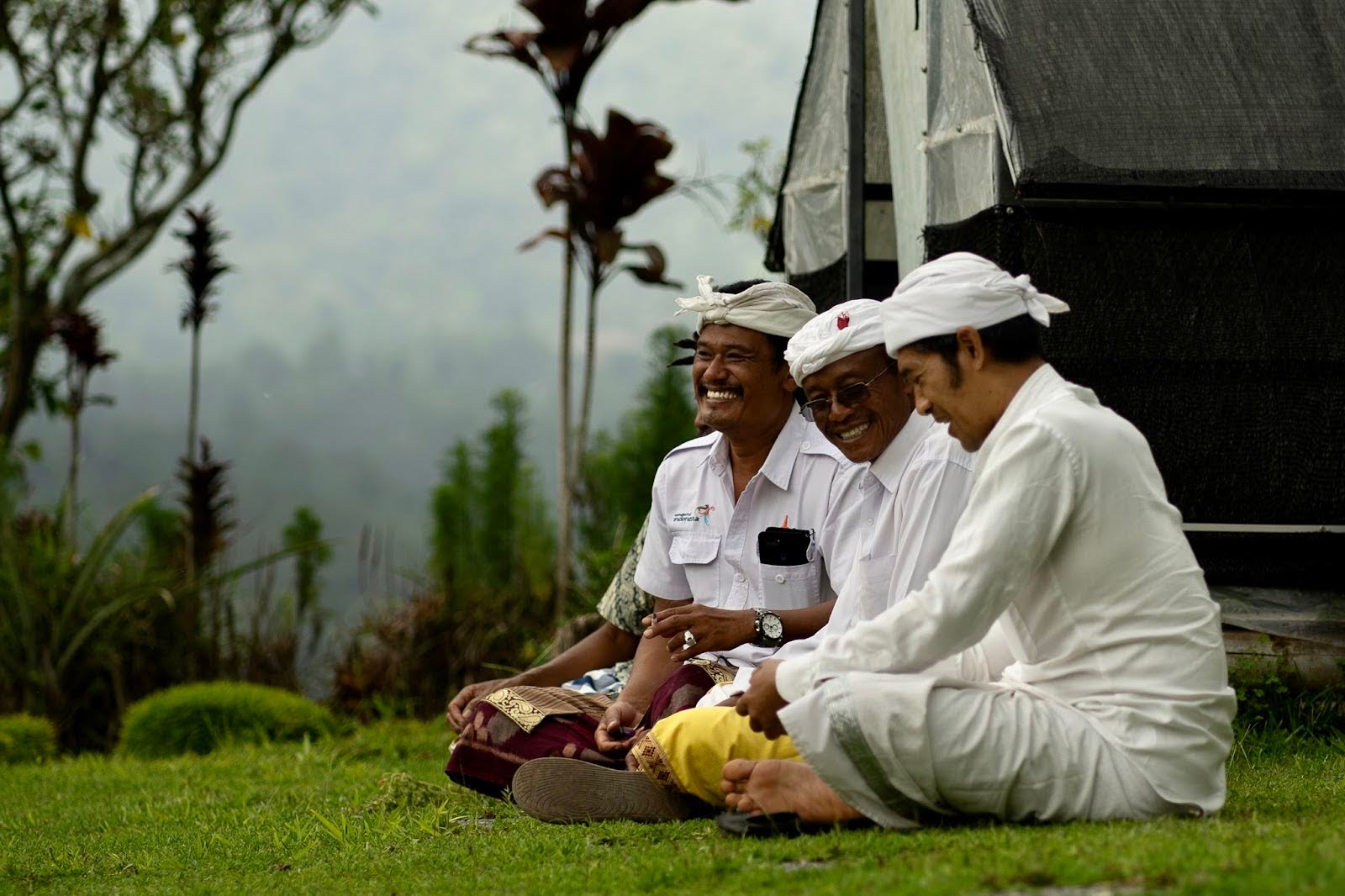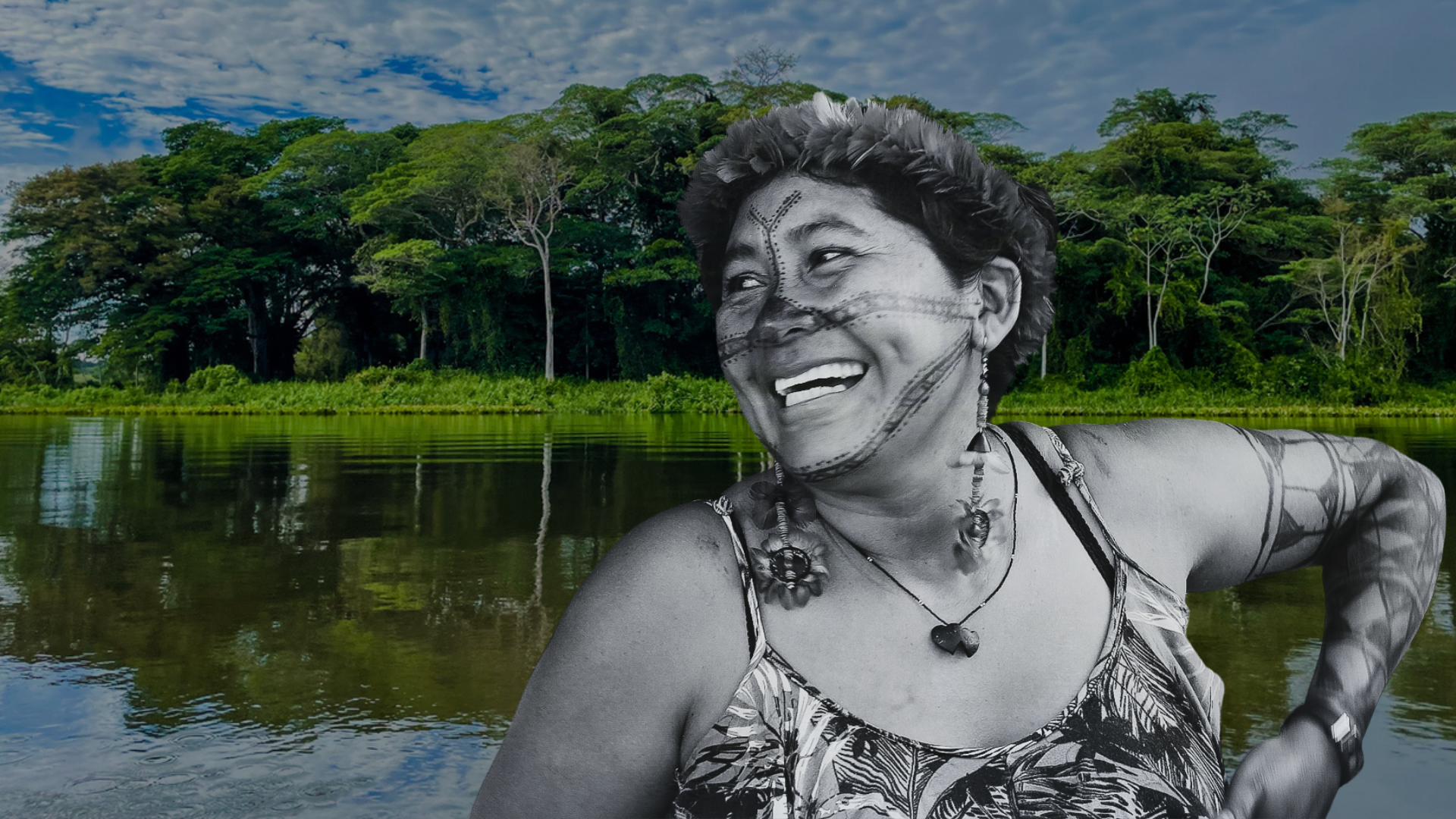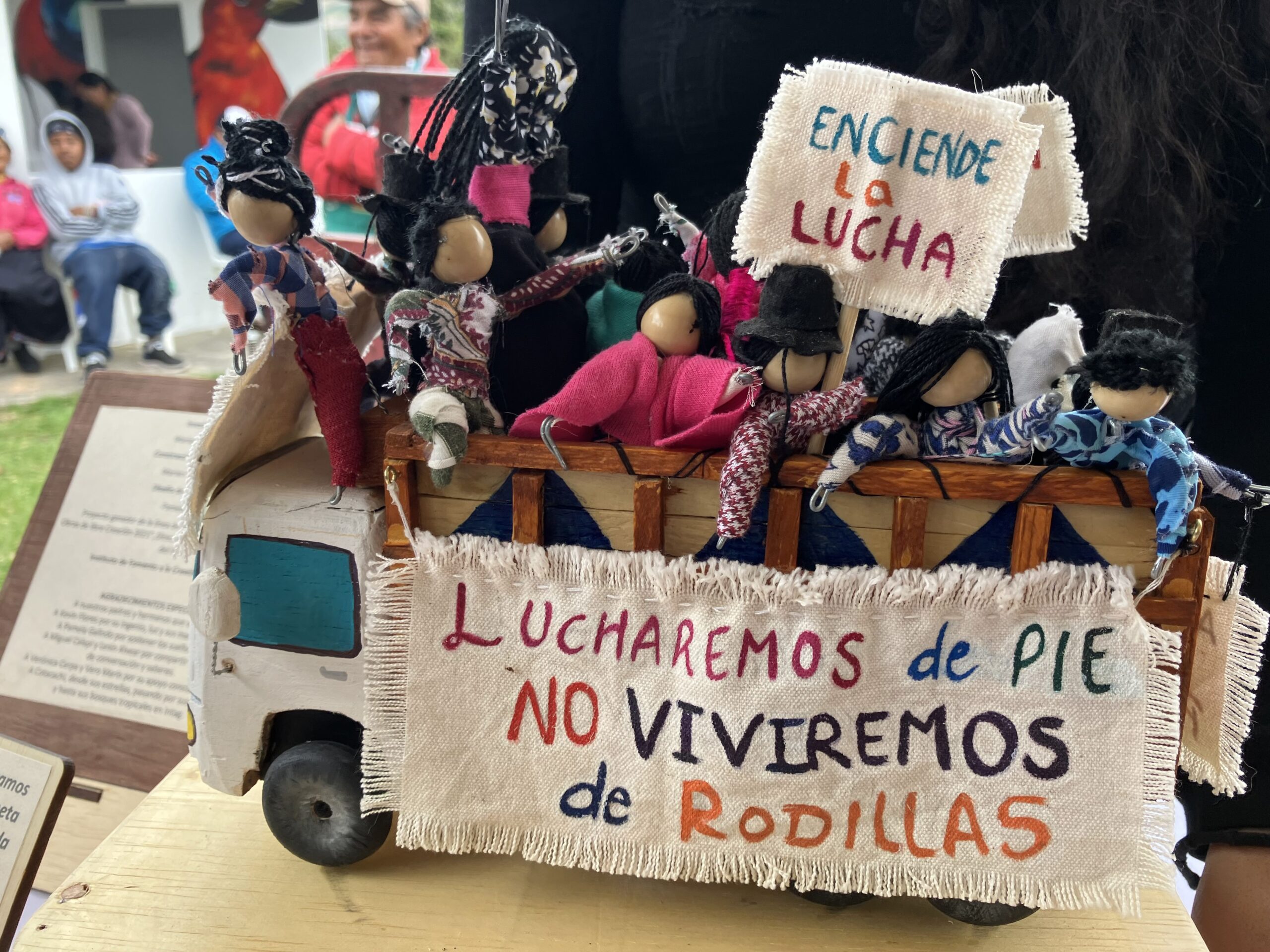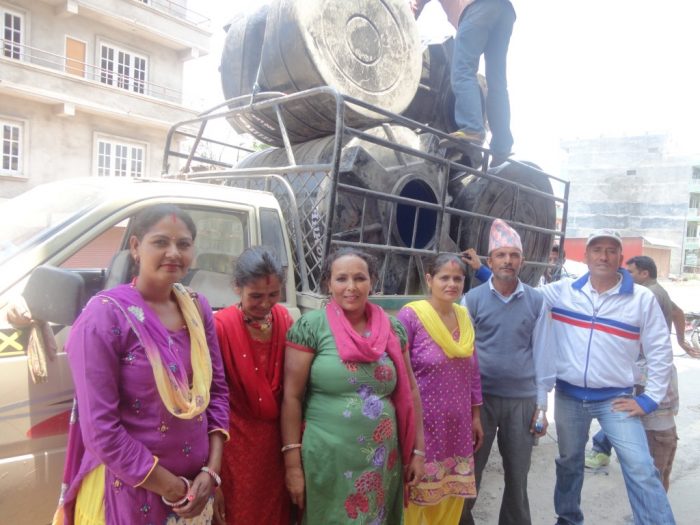What Thousand Currents knows and does in the face of disaster
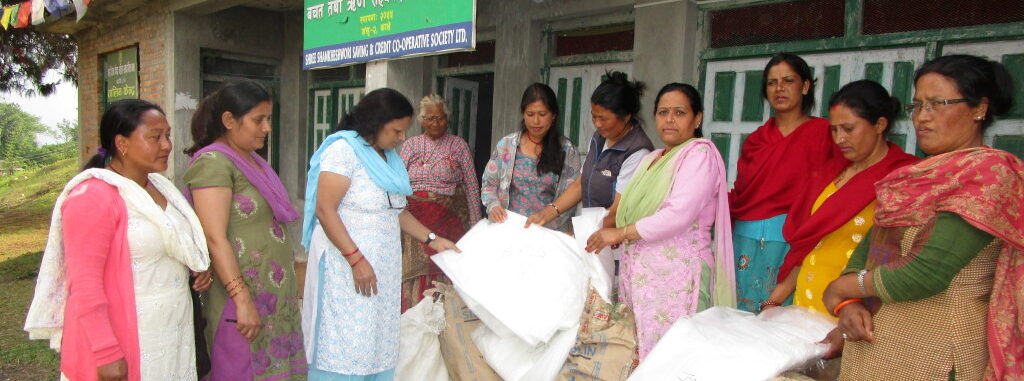
As an organization with a long-term focus on our shared global challenges, Thousand Currents itself does not focus on humanitarian or relief funding. But we do accompany our grassroots partners and provide multiple-year, flexible support that responds to their goals.
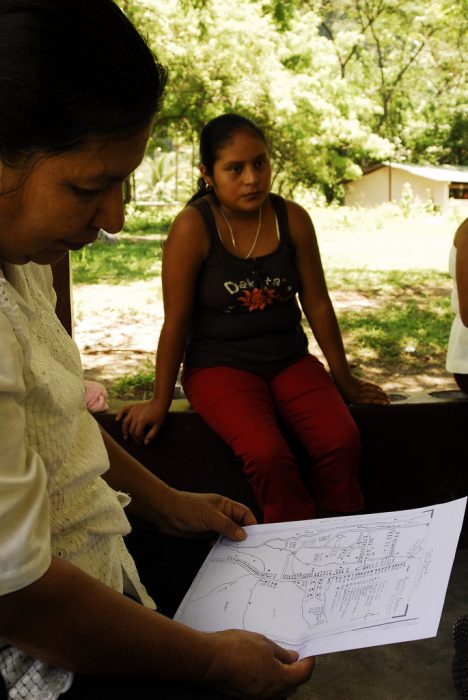
Women plan using a map of their community, led by Thousand Currents partner Institute for Overcoming Urban Poverty in Guatemala (ISMUGUA). Photo credit: Marlon Garcia
What this means when disaster hits is that we can and have set up special funds to help partners recover, rebuild, and revitalize their work and their communities following disaster, such as the Nepal Recovery and Resilience Fund in 2015.
This also means that with climate justice as one of our foci, we support partners in preventing and preparing for climate-related disasters. For example, our partner ISMUGUA in Guatemala City has a lot of experience in community-led disaster preparedness in urban settings. Our global catalyst partner La Via Campesina focuses on food sovereignty and agroecology as an alternative to industrial agriculture, a major contributor to climate change.
As people cope with natural and man-made disasters around the globe, we offer what we know about grassroots organizations, social transformation, giving, and philanthropy. Below you’ll also see some suggested articles for further reading.
What we know about disaster response/recovery and grassroots organizations:
People are not waiting for help to arrive from abroad. For survivors, family, friends, and neighbors are the help.
- People’s immediate social network upon which they rely on a daily basis are the true ‘first responders.’
- Community-led groups will also spring to action to reach the most vulnerable, quickly and they will stay the course.
- Deep contextual knowledge, embeddedness within communities, language and cultural skills, and ability to operate with an ear close to the ground is what is most needed in the short- and the long-term.
- It is because of their continuity of support that grassroots organizations can:
- understand a changing regulatory landscape throughout the recovery process and and make thoughtful decisions.
- respond to community needs and continue to do so well after media attention is over.
- ACTION: Give where the roots are deep.
What we know about disaster response/recovery and social transformation:
Disasters can demonstrate what community self-determination and resilience look like in action.
- Moments of disaster highlight under-development and urban planning and misguided political decisions, wherever it is.
- e.g. housing instability in Nepal – what didn’t happen before/after the earthquake
- e.g. Houston superfund sites – in the U.S. under-development looks like public infrastructure dictated by private interests, with wider repercussions for everyone (or many more people)
- Organizations with a history and practice of participatory decision-making and community organizing know how to:
- balance the needs of individuals with the needs of the wider community, and
- establish shared priorities and effectively utilize shared financial resources.
- ACTION: Give where the roots are deep.
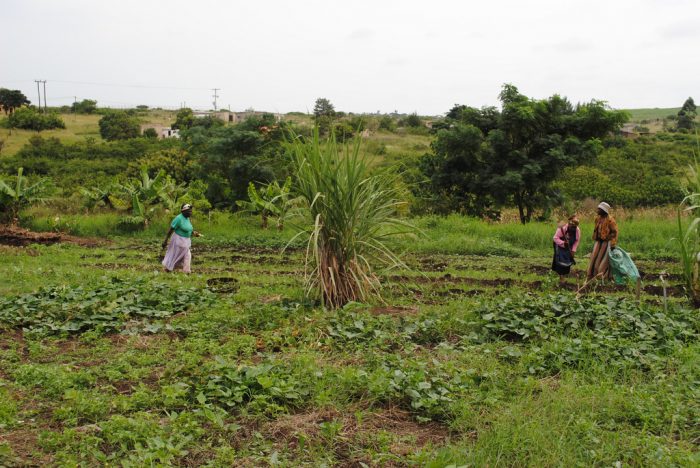
While climate change poses one of the gravest risks to humankind, small farmers around the world (like these women pictured in KwaZulu-Natal, South Africa) build resilience using agroecological practices, increasing their ability to continue feeding their families when faced with unexpected events. Photo courtesy of BioWatch.
What we know about disaster response/recovery and giving:
The lines between charity and social justice is blurred in the face of natural disasters.
- Generosity, compassion, and kindness amongst family, friends, communities and nations – no matter what they have – is ever present in the aftermath of disaster.
- We advise people to “think local” with their disaster giving. The following four questions offer an important starting point:
- How deep are the organization’s “roots” in the community?
- Do they know how they will reach people who are the most vulnerable, or most affected, e.g. people with mobility restrictions?
- How is the organization accountable to the community? Are efforts grounded in self-determination?
- Are stories of urgency and vulnerability balanced with a fortitude to stay the course?
- During disasters, especially with regards to media coverage, it’s important to:
- Stay aware of whose “voices” are represented and falsehoods perpetuated or reinforced by hero’s narratives.
- Not numb out, which is tough when disasters don’t directly affect you.
- Remember that just because you don’t hear about a local response – whether it be in a U.S. territory (e.g. Hurricane Maria in P.R.) or an African nation (e.g. Sierra Leone landslides) – doesn’t mean there isn’t one.
- ACTION: Give where the roots are deep.
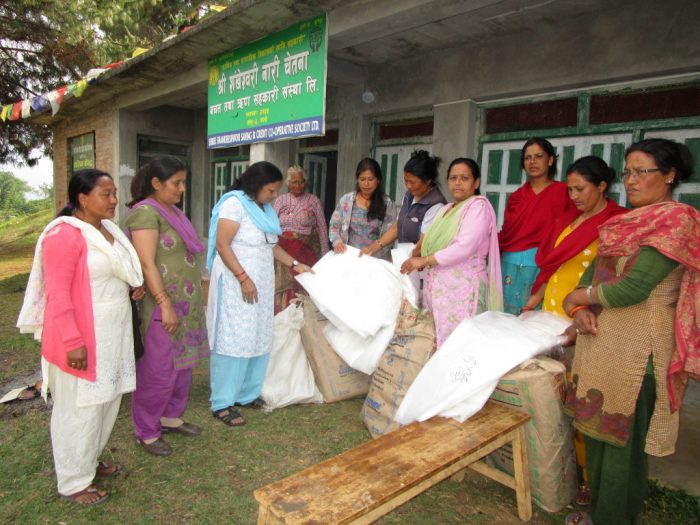
WACN staff distributing tents to the Shankhupatichaur Village Development Committee. Photo courtesy of Women Awareness Centre Nepal.
What we know about disaster response/recovery and philanthropy:
The resourcefulness of grassroots organizations in the face of disaster deserves more and more thoughtful philanthropic investment.
- Community-led analysis, processes, and practices guide how we at Thousand Currents disburse funds in the wake of disaster.
- While community-based organizations cannot manage major recovery efforts or large-scale rescue operations or rebuild civil infrastructure on their own, grassroots organizers know their communities best and are uniquely situated to offer continuity of support throughout the recovery process.
- This is especially important because the severity and unpredictability of storms is increasing with climate change.
- It is more important than ever for philanthropists to recognize the relationship of historical and man-made vulnerabilities and natural phenomena.
- This is not “politicizing.” This is the “new normal.”
- ACTION: Give where the roots are deep.
Suggested further reading:
- Hurricane Harvey’s toxic floods poisoned Houston along race and class lines, Salon
- Race and Class Are the Biggest Issues Around Hurricane Harvey and We Need to Start Talking About Them, The Root
- Why we can expect more extreme rainstorms like Harvey as Earth warms, Washington Post
- Climate change did not “cause” Harvey or Irma, but it’s a huge part of the story, Vox
- The Red Cross Won’t Save Houston, Slate
- Shooting bullets at a hurricane, Jacobin
- In both the US and Mexico, citizens led better disaster response than their governments, Quartz
- The Next Challenge for Puerto Rico’s recovery, The Atlantic
Related Stories
